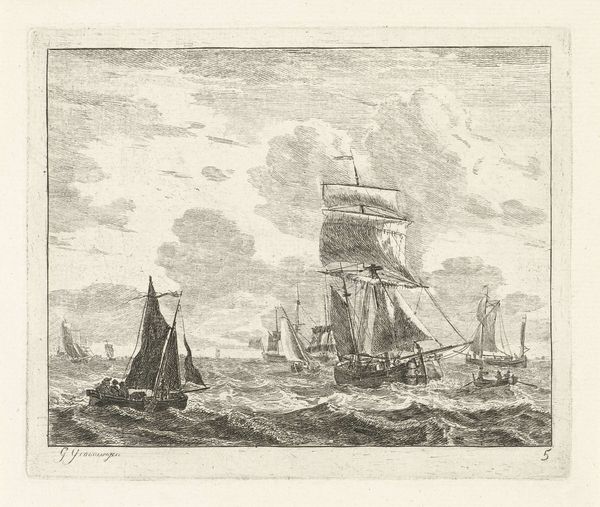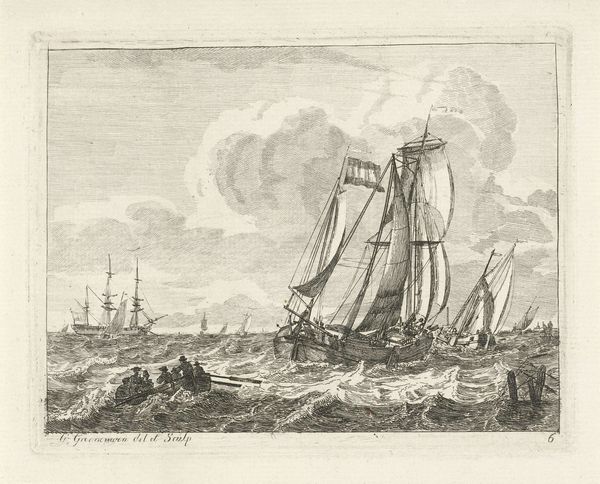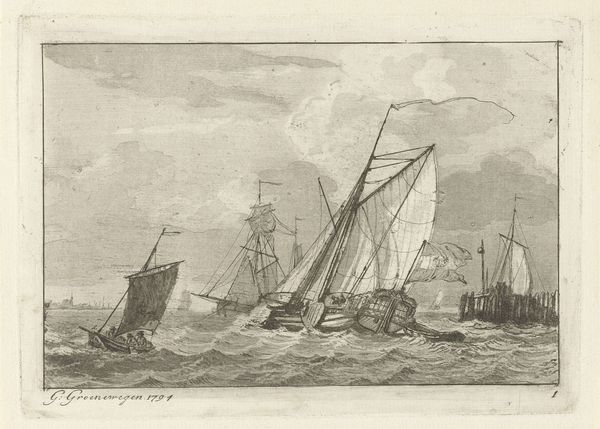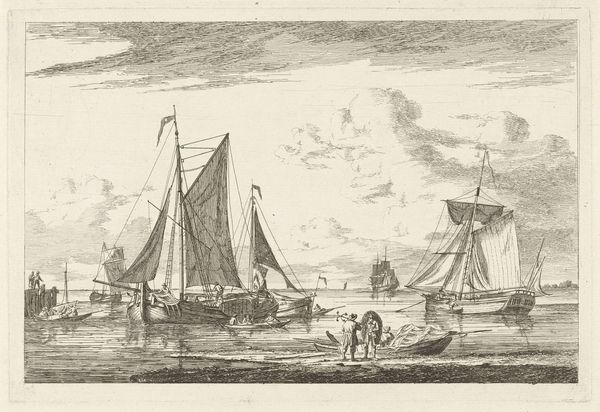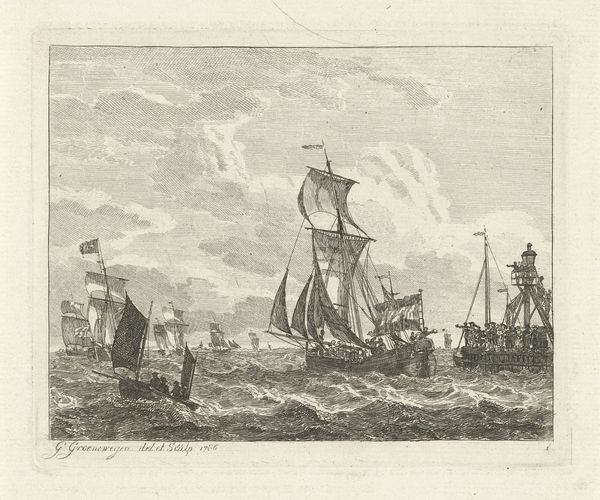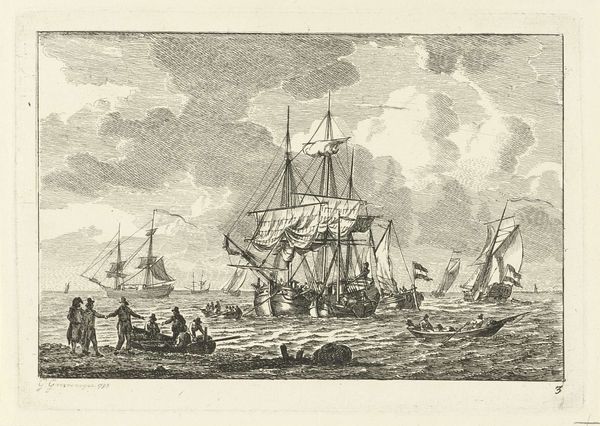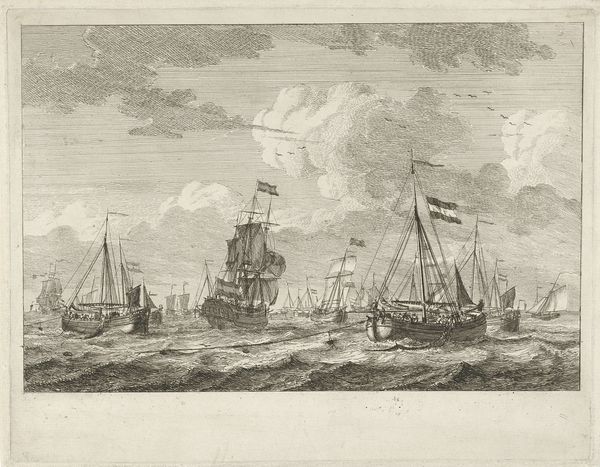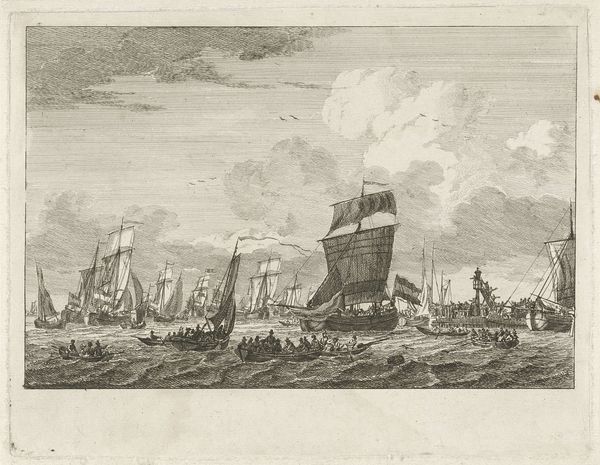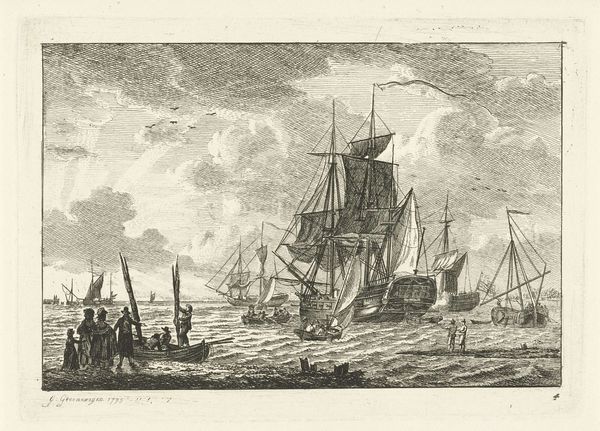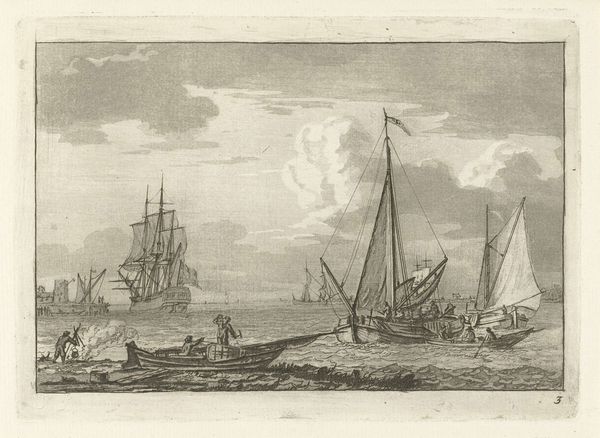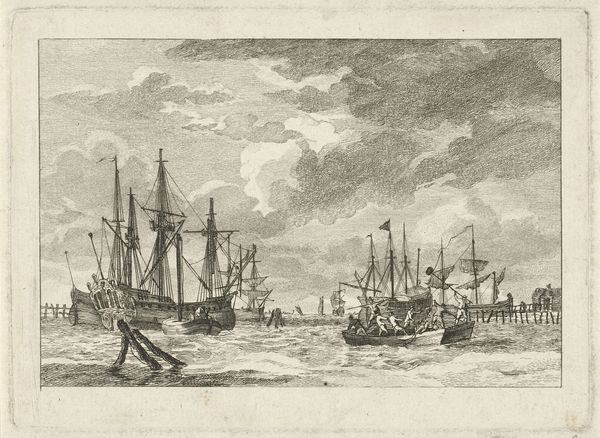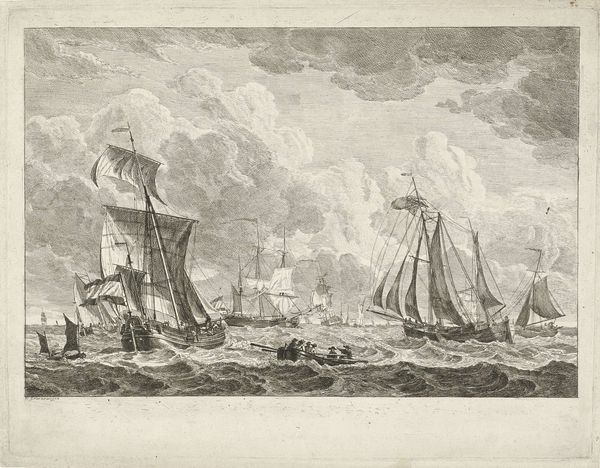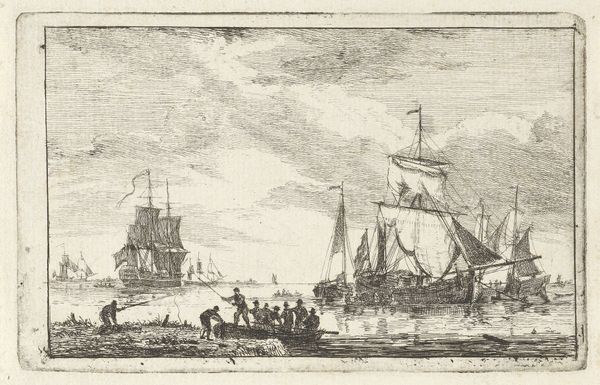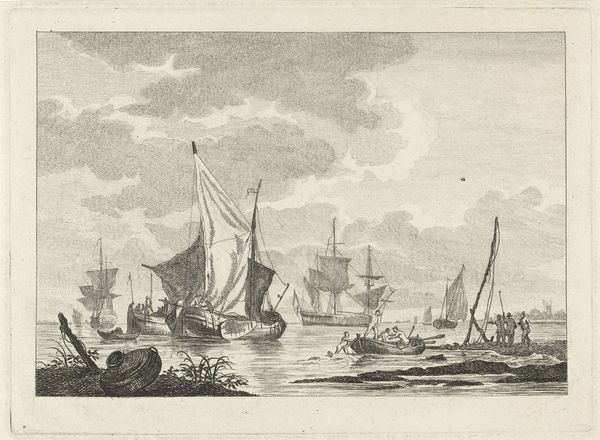
print, engraving
# print
#
landscape
#
cityscape
#
engraving
Dimensions: height 231 mm, width 327 mm
Copyright: Rijks Museum: Open Domain
Curator: There’s something so incredibly peaceful about this image. Despite all the maritime activity, there’s a real stillness. Editor: That stillness is deceptive, isn't it? This is “View of Rotterdam from the Water” by Gerrit Groenewegen, created in 1794. A print, an engraving actually, depicting a bustling port city. It's a snapshot of Rotterdam on the brink of massive social and political upheaval. Curator: Upheaval masked by gently rolling waves and fluffy clouds. But you're right; I sense something underlying the calm facade. I’m curious about the light—it's so evenly distributed, almost theatrical, drawing you towards the centre of the composition. What does it say to you? Editor: I think it points to Rotterdam's pivotal role in global trade at the time. See those ships, symbols of commerce and colonial exchange, positioned at the heart of the view. It also calls into question who got to enjoy that 'stillness' at whose expense. This was a deeply unequal world. Curator: So the engraving serves as a document of a specific historical moment, warts and all. But it also seems to present an idealised vision—all of the ships are sailing happily, all of the figures peacefully coexist. What's omitted becomes as telling as what's included. Editor: Exactly! What’s excluded? The labour that made such prosperity possible; the human cost of colonialism; the everyday struggles of ordinary Rotterdammers. We see the water, but not the depths it hides. Curator: Which is exactly why viewing it through a contemporary lens allows us to reframe what we’re looking at. I can see the inherent contradictions of that particular point in time. Groenewegen captured something both incredibly serene and deeply unsettling. Editor: The beauty lies in its ability to spark that critical reflection. The print invites us to question not only the past but also our present and its echoes of that past. It serves as a constant reminder of the voices we choose to amplify, and those we must continue to unearth.
Comments
No comments
Be the first to comment and join the conversation on the ultimate creative platform.
